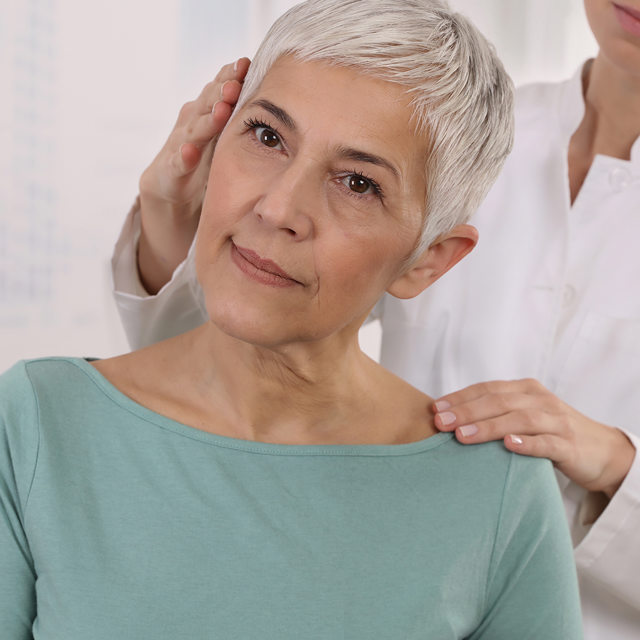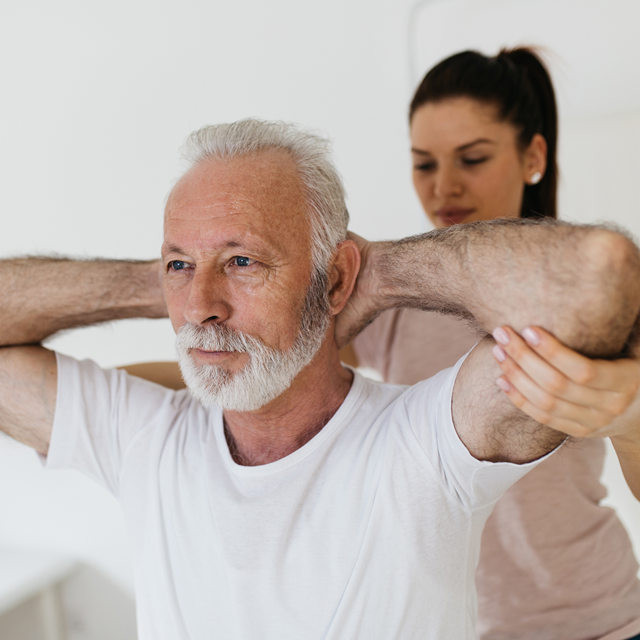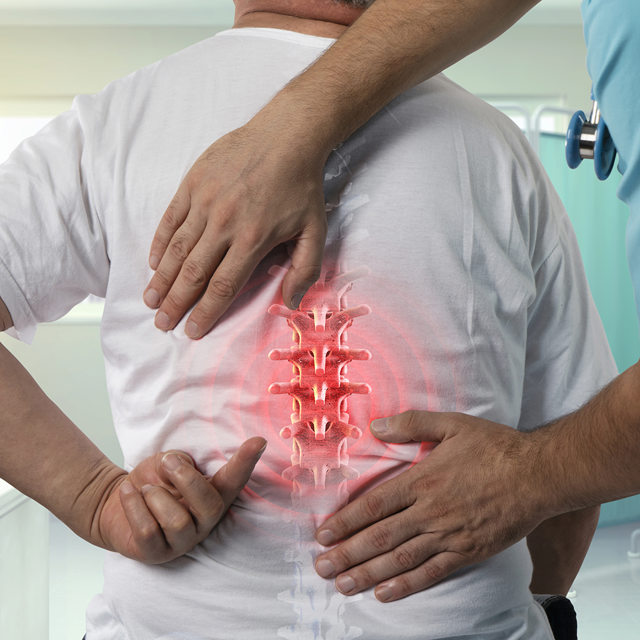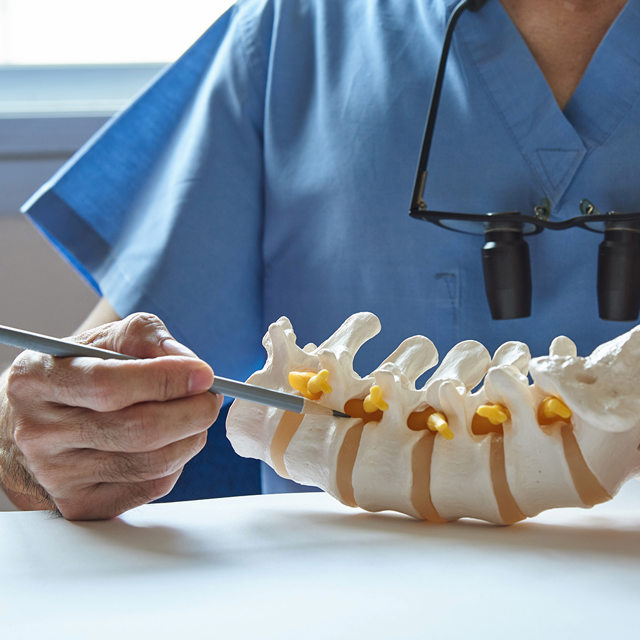
Spine Conditions We Treat
Spine Care at Penn Highlands
At Penn Highlands Neurosurgery, we have more than 40 years of experience at world-class medical systems treating all types of spine conditions that cause back pain or neck pain and prevent you from living your fullest life. Following is a short description of those conditions. If you need care for any type of neck pain or back pain condition, we have clinics throughout Central Pennsylvania.
We can see most patients for back pain and neck pain in one week.
Call 814-503-4433 to schedule an appointment.
Degenerative Spine Conditions
Degenerative spine conditions occur over time, mostly due to aging. These conditions also can be caused by arthritis and, less often, as a result of a tumor or infection. Common degenerative spine conditions include:
Bulging Discs - Sometimes called protruding discs, this is a common condition as people grow older. Bulging disc occurs when the disc that sits between your spinal vertebrae pushes out of its normal space. Unlike a herniated disc, however, a bulging disc usually does not break through the outer layer of the disc.
Degenerative Disc disease - A common source of lower back pain and neck pain, degenerative disc disease occurs when the discs that provide cushioning between the vertebrae in your spine wear away. This usually happens as a result of aging.
Facet Arthropathy - Facet joints are the connections between your spinal vertebrae that allow you to bend forward and backward. Facet arthropathy is arthritis that occurs in these joints. Like arthritis in your other joints, facet arthropathy breaks down the protective cushioning and leaves bone rubbing against bone, which causes back pain or neck pain.
Herniated Discs (also called disc herniation or slipped disc) - Like bulging disc, a herniated disc starts when the soft cushion between the vertebrae bulges out of its normal location. Herniated discs crack through the outer covering of the disc, called the annulus. This causes inflammation and can compress nearby nerves. Herniated discs are one of the most common causes of lower back pain and pain in the legs called sciatica. Herniated discs are often a result of aging but also can be caused by an accident.
Myelopathy - Myelopathy is a condition in which the spinal cord is compressed, putting pressure on the nerves and causing pain. This condition occurs most often in the neck or upper back. Myelopathy can be caused by an accident, a condition you are born with, or a structural spine problem. Symptoms include numbness and tingling, weakness in the arms and legs, changes in balance, fine motor function and in severe cases bowel and bladder dysfunction. . (If you are experiencing urinary or bowel incontinence, seek immediate medical care.)
Radiculopathy - Radiculopathy, commonly referred to as pinched nerves, occurs when the nerve roots that run from the spinal column to various parts of your body become pinched. It can cause weakness, numbness, or difficulty controlling specific muscles. It can occur anywhere in the spinal column but most often in the lower back, which often pinches the sciatica nerve resulting in pain running down the leg.
Spinal Stenosis - Most often occurring in the neck or lower back, spinal stenosis is created when the spinal column narrows, which can be caused by a series of issues including overgrown bone, herniated disks, tumors, and spinal injuries. This puts pressure on the spinal cord and the nerves that travel through the spine. The pressure can cause pain, numbness, tingling, balance dysfunction, and in rare cases: muscle weakness, incontinence, and problems with bowel function. (If you are experiencing urinary or bowel incontinence, seek immediate medical care.)
Synovial Cyst - A fluid-filled sac in the joints of the spine, usually in the lower back, that has developed as a result of arthritis and may compress nerves. Symptoms of a synovial cyst are similar to spinal stenosis and typically include pain in the lower back that radiates down one or both legs.
Spine Tumors
Tumors that grow in the vertebrae or spinal cord can be cancerous (malignant) or non-cancerous (benign). Spine tumors are referred to as neoplastic spine conditions. Neoplastic simply refers to an abnormal growth of cells that result in a tumor.
Whether benign or malignant, spinal tumors need to be treated by an expert spine neurosurgeon like those at Penn Highlands Neurosurgery. If left untreated, tumors can cause spinal cord compression and can damage nerves located near the area of the tumor, causing neurological problems and possible paralysis. Progression of such tumors depends on the specific type of tumor. Treatment for spine tumors may include spine surgery, radiation therapy, and chemotherapy. Recent studies show that patients tend to have better functional outcomes with surgery and radiation than with radiation alone.
Spine Structure Abnormalities
Some people are born with conditions that affect the structure of the spine, and others develop them later in life. In most cases, spine surgery can treat the condition. The more common spine abnormalities treated by our back doctors include:
Kyphosis - Kyphosis is a forward rounding of the back that commonly occurs in older patients with osteoporosis. It is more commonly known as a dowager's hump. Kyphosis in the elderly results from multiple fractures in the spine, most often caused by osteoporosis. Treatment with a surgical procedure called kyphoplasty can prevent pain from a fracture and help prevent additional fractures that result in a dowager's hump. Read more.
Lordosis - Sometimes called swayback, lordosis is a significant inward curve in the lower back.
Many treatment options are available based on the severity of the condition. Options include bracing to correct spine curvature, physical therapy, and spine surgery.
Scoliosis - Side-to-side curvature of the spine that occurs in childhood or may occur later in life as a result of aging or degenerative spinal structure. Adult onset scoliosis is caused by degeneration of the facet joints and intervertebral discs. In rare cases, the spine develops a curvature to compensate for the wear and tear that has occurred.
Spondylolysis / Spondylolisthesis - Spondylolysis is a crack or stress fracture in a lower back vertebra. Its more serious cousin, spondylolisthesis, occurs when that fractured vertebra slips out of place .Spondylolysis typically affects children and adolescents active in sports such as gymnastics, football, and weightlifting, as well as active adults in their 20s-40s. This condition is most effectively treated with spine fusion.






